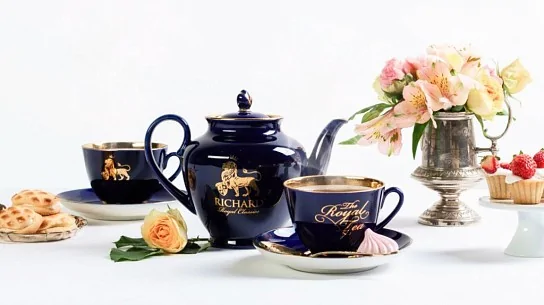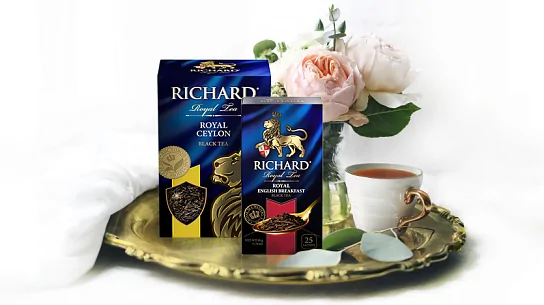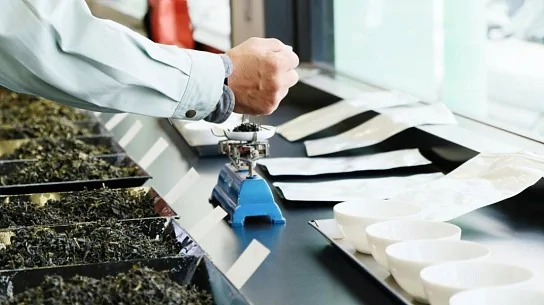Earl Grey tea: history, secrets of production and tea-party specialities
Earl Grey tea has a soft taste and pleasant, citrusy smell. Let’s take a look at how this fragrant drink is produced and how to brew and drink proper bergamot tea.
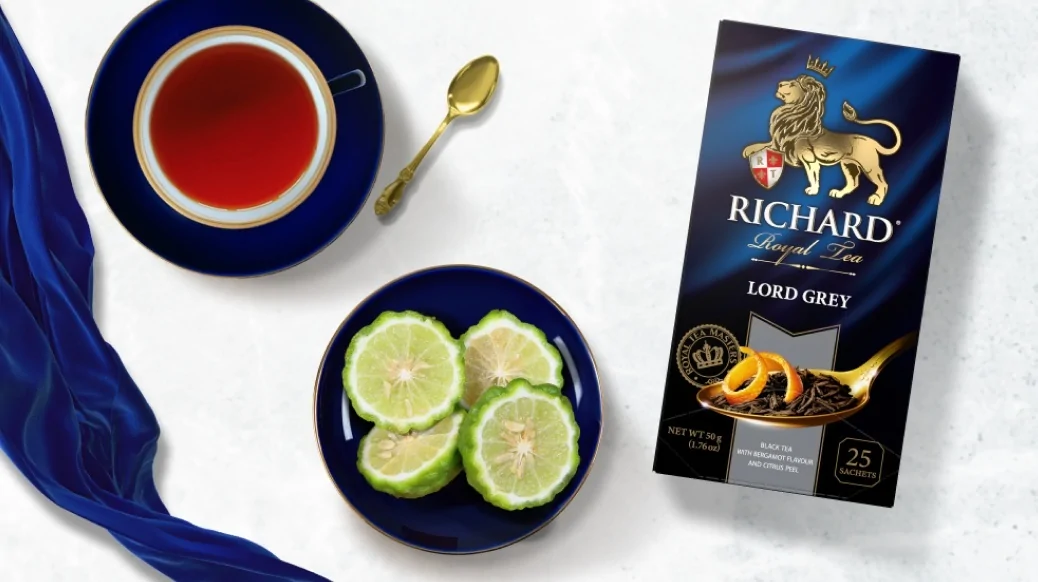
We are talking about an icon in the world of tea: a velvety, amber coloured beverage with its intense taste saturated with the aroma of bergamot. Earl Grey tea is famed around the world as one of the most full-bodied and fragrant teas. It’s the favorite blend of the English Queen Elizabeth II. In the “Richard” product line Earl Grey blend is represented by the famous Ceylon tea with a hint of bergamot and lemon. This extravaganza of taste is dearly beloved and appreciated by millions of people.
History and origin of bergamot tea
There are at least three versions of the origins of Earl Grey English tea: political, adventurous and prosaic.
The political version is the most widespread. According to this, the origin of the tea is associated with the name of Charles Grey, British Prime Minister during the 1830s. By that time England had its own tea plantations in different countries; the overseas economy was growing stronger due to advances in shipping and so the tea trade became dominant. According to the legend, English sailors saved a son of a Chinese mandarin during a bad storm that had wrecked his ship. The young nobleman sent the British Prime Minister a batch of bergamot tea as an expression of his gratitude. But the historical facts undermine this charming tale: in fact, Grey was one of the initiators of the breakup of connections with China. Besides, bergamot does not grow in this Eastern country.
The adventurous version intertwines with the previous one. Its supporters think that the creator of the fragrant drink was Lord George Staunton. He travelled a great deal and had visited China during a diplomatic mission. There he tasted a previously unknown blend of green tea and orange. Upon his return to England, Staunton tried to recreate the blend from memory, but since he had no green tea, he mixed the black tea he had with bergamot oil (which had become very popular in the perfume industry by that time). The lord treated his friend Charles Gray to this tea and named it after him in his honour.
The prosaic version sounds more reasonable than the others. Its story takes place in the same period of time when an English ship transporting tea and bergamot oil from India to Great Britain sailed into a bad storm. The glass bottles of oil cracked and the fluid soaked into the bags containing tea. The sailors couldn’t just throw away the goods, so they dried the bergamot tea and brewed it up. The beverage amazed them with its superior quality.
Two decades later, documents about the origins of Earl Grey tea began to be published: at the end of the 1860s details started to appear in the advertisements. The beverage won the public’s affection very fast: at the beginning of the twentieth century it became possible to buy it in any tea shop in Britain.
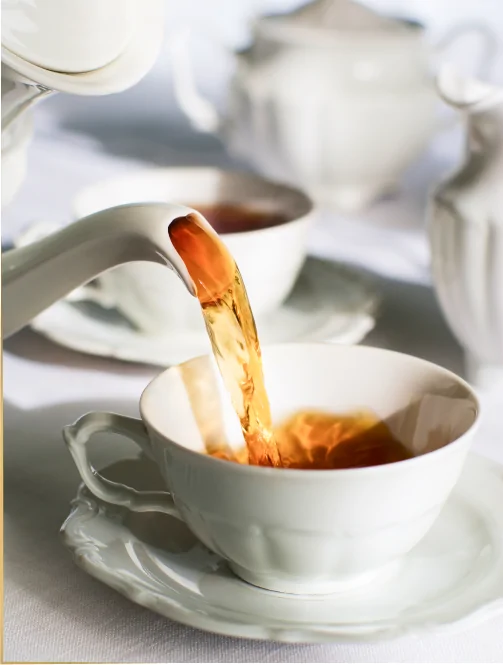
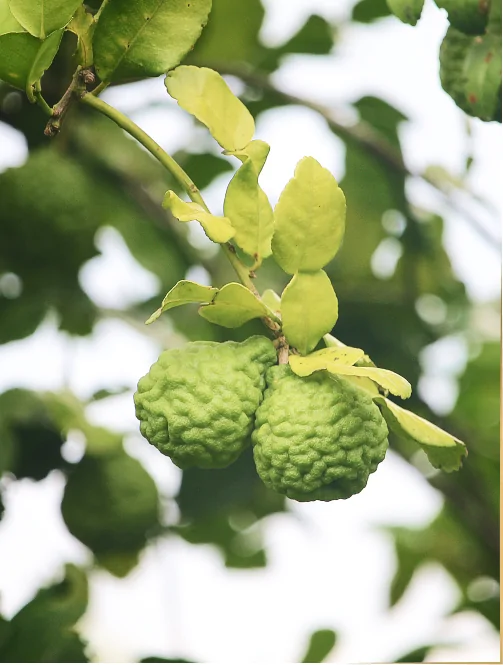
Earl Grey English tea is a strong blend of Ceylon tea flavored with bergamot oil.
The bergamot fruit is a hybrid of bitter orange and citron. It has an intense but bitter taste, which is why it is used as an additive and not eaten as a fruit.
The smell of bergamot is much gentler than its taste: it’s sweet’n’sour, both tart and fresh. Some tea recipes allow for the use of bergamot peel for brewing tea. Still, most producers prefer to use the oil which is also rich in vitamin C, flavonoids and linalool. It makes the tea fragrant and dense.
In order to preserve the rich aroma and taste, the tea-leaves are dried until they twist. Next, oxidation occurs before the tea is treated with heat. After all the necessary procedures the tea-leaves turn black and that particular taste is preserved.
Richard Earl Grey black tea is distinguished by its amber colour, magnetic aroma, and a velvety taste with a pleasant hint of citrus – and a distinctive, fresh after-taste. This tea is a legend in the tea world. You can drink it every day and will never get enough of it.
How to brew Earl Grey tea
In order to retain all its gustatory qualities – so that the bergamot oil won’t fade after contact with air – Earl Grey tea should be kept in a cloth bag inside a tin or glass jar. The container should be tightly closed with a cap so that the aroma of the tea won’t become contaminated with the smell of coffee or spices stored nearby.
English tradition dictates a careful and calm attitude during the process of brewing the bergamot tea. Porcelain crockery is the best choice for the tea ceremony: it warms up fast and evenly, perfectly suiting the brewing process.
The teapot should be warmed up beforehand. Then the tea should be added: one spoon per cup. After which, boiling water is added and the tea allowed to steep for five minutes. The English, as well as people in Asian countries, prefer drinking the tea right after brewing. Tea that has remained untouched for fifteen minutes is deemed too strong an unsuitable for consumption and should be poured away.
How to drink Earl Grey tea
In England, bergamot tea is most often served at five o’clock – tea-time.
It tastes especially good with sugar or honey. People who prefer unsweetened beverages can skip it if they wish. Richard Lord Grey tea is equally wonderful with a hint of sugar or without. Cupcakes, scones, toast, canapes and other light appetisers are regarded as the most suitable to be served with afternoon tea.
However, this beverage shouldn’t be considered suitable just for the late afternoon: bergamot tea can be served for breakfast too. This slightly bitter and strong drink can be mixed with fresh milk or brewed the classic way — anyway, the day that starts with a cup of this stupendous tea can’t be a bad one.


